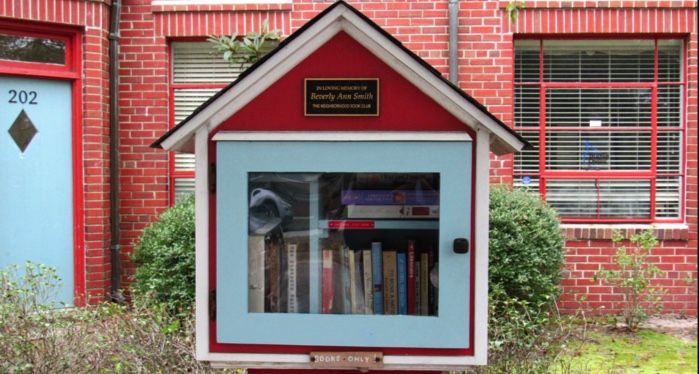
How Much Time and Money Does it Take to Maintain a Little Free Library?
Little Free Libraries, or LFLs, as they’re sometimes known, have become a common feature of many neighborhoods. Small and usually with a window on the front, these tiny libraries are a place where passersby can pick out and drop off used books as a means of encouraging reading in the community. Many houses with a Little Free Library have taken on the challenge of differentiating their tiny book collection, with designs ranging from simple to ornate. While the premise is simple: take books, leave books, and do it all for free, the cost of a Little Free Library isn’t as straightforward. The “stewards” of Little Free Libraries actually spend quite a bit of time organizing and maintaining their collection.
To establish an official Little Free Library — meaning your library will be recorded by the organization and put on their map, plus you’ll be given a metal nameplate for your library — you first have to apply for a charter sign. At this time, charter signs cost $40 per library and also give stewards access to a Facebook group and book giveaways to help with the maintenance of their libraries. After purchasing a charter sign, Little Free Library owners can then choose to build their own library, or to purchase a pre-made one from the site. According to the Little Free Library site, the average cost of these pre-built options is $250, with stewards also needing to consider additional costs, such as installing a post or other perch for the library to sit on.
Little Free Libraries can be anything from a simple plywood box with a door, to elaborate setups that feature electric lighting or are replicas of a nearby building or landmark. In my own neighborhood, I’ve seen these miniature libraries decked out as everything from fire stations to fairy houses, and many of them swap out decorations seasonally. However, it is possible to get creative and repurpose old file drawers, cabinets, and more in order to lower the cost of the initial build. Additionally, libraries also require ongoing maintenance to keep them looking good, a cost that stewards will have to plan into their budgets.
After the basic startup costs, the next task is to stock the library with books. While the premise of the Little Free Library is that books are swapped in and out by community members at no cost, the reality is that many stewards I know either draw from their own collections or purchase books specifically to stock their libraries. As any librarian or used bookseller can tell you, people have a hard time just getting rid of books, which means that Little Free Libraries often end up crammed with old computer manuals, outdated guides, and novels that are falling apart. Stewards have to spend both time and money to establish a robust collection of interest to those picking out books, not just those looking to get rid of them.
In addition to cost, time is also a major factor in maintaining a miniature library. Along with upkeep of the library’s physical structure, there’s buying books, weeding out the collection, and making sure materials are organized in an attractive way for visitors. The Little Free Library group also encourages charter sign holders to advertise their library in the neighborhood or at local businesses, or to consider hosting pop-up events or giveaways that can be promoted on social media. Some owners even cultivate a specific type of Little Free Library by focusing on topics such as local authors, diverse stories, or nonfiction. This, naturally, takes additional time and resources.
If you’re considering becoming a steward of your own Little Free Library, it’s important to consider if you have the time and resources to make it an enjoyable experience for yourself and anyone who is helping you. While the costs associated with Little Free Libraries can become quite steep, it’s also very possible to build a library using existing items and to work on stocking it with books you find for free. There are also groups like Diverstories that maintain wishlists to help send books to libraries and communities and help to spread Little Free Libraries in areas where they are less common.
When I spoke to several Little Free Library owners via Instagram, they had a range of experiences. Some had spent up to $1,000 paying for their charter sign, their custom-built library from a local designer, and new release books for their collection. Most, though, cited their startup costs— that is, charter sign and library structure— as being around $200. The average steward spent an hour a week curating the library, but as one steward noted, that doesn’t include time spent on making your yard look attractive as a library site. Overall, most library stewards I spoke to found the experience to be a positive and enriching one and said that it helped them share a love of reading with their community.
Looking to start your own Little Free Library? Check out our best tips and products to get up and running!













